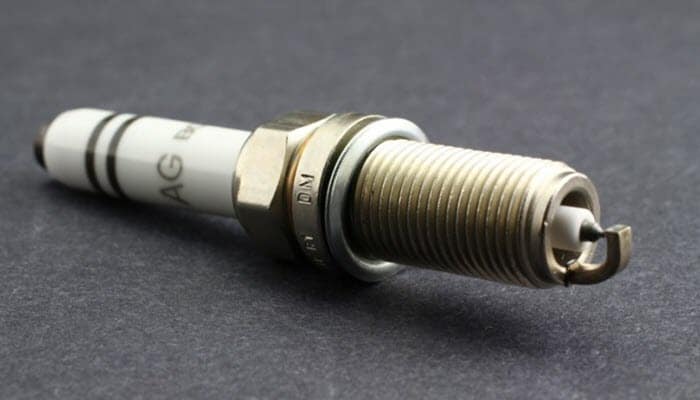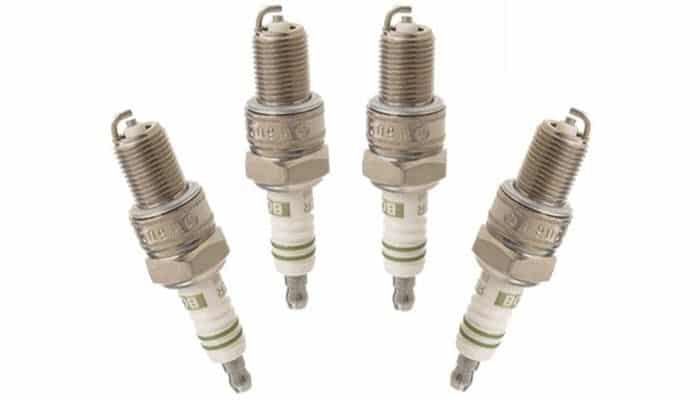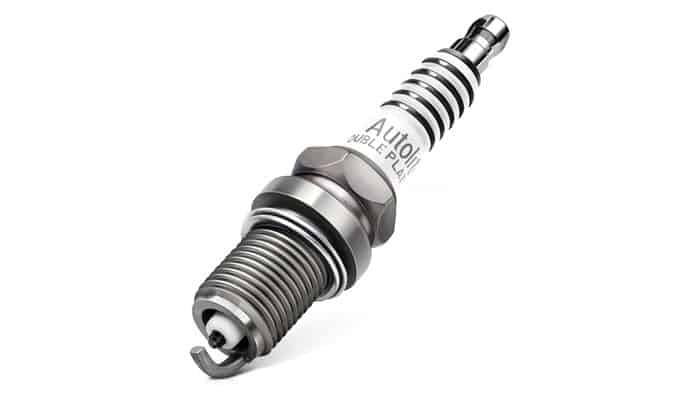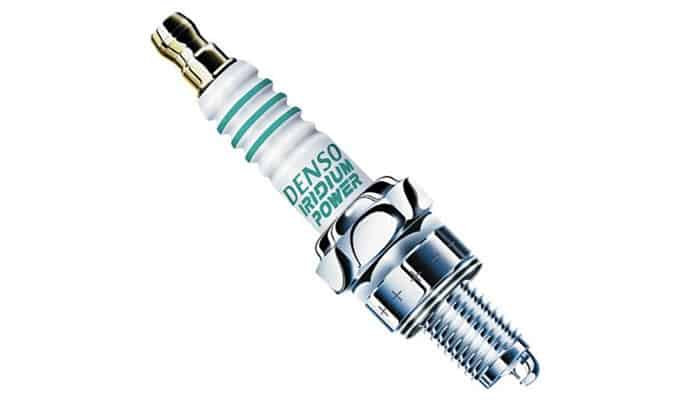Spark plugs might be small but they play a huge part in starting your car. The spark of electricity they emit produces the ignition for the combustion required to start your car. But what happens when spark plugs go bad?
Without a functional spark plug, you’ll have a hard time sustaining maximum power and you’ll experience either misfire during acceleration or problems with cold-starting. Now, you wouldn’t want those things to happen, right?
With that, you have to know how often you’ll need to replace your spark plugs.
On Replacing Spark Plugs
Spark plugs, in general, don’t require frequent replacements. In fact, your car can go for years and several miles before you have to worry about getting a replacement.
For certain car manufacturers, however, it’s essential to have a new spark plug installed for every 30,000 miles. Take note, however, that it’s not a strict rule since the longevity of a spark plug depends on what type it is as well as its condition.
For example:
Copper plugs have the shortest life. With that, you can expect to replace them more often.
Why You Need to Replace Your Spark Plug
Spark plugs wear out as they age. After enduring abuse for hundreds or and thousands of miles, you really can’t expect them to stay intact and show excellent performance.

One good reason is the deposits that form on the spark plugs which results in pre-ignition of the fuel. This translates to an unreliable supply of energy for your vehicle.
Additionally, another reason why spark plugs can’t last for a really long time is its exposure to debris, extreme temperatures and the normal wear and tear process. These things increase the gap or space where the spark has to travel in order to create the right combustion at the right time.
The primary benefit you’ll get from replacing your spark plug is peace of mind. With a new one installed, you won’t have to worry about your car not starting.
Additionally, getting new spark plugs also offers the following benefits:
Reduction in Harmful Emissions
Regular engine tune-ups, particularly when it comes to spark plugs, won’t only help you save on gas but it can also lower air pollution.
Ensures Smooth Starts
An old spark plug may cause your car to experience jerky starts. Changing it with a new one ensures smoother and more energetic starts.
Creates Optimal Combustion
Having a fully functional spark plug means having an efficient and fully functional combustion system.
Signs You Need to Replace Your Spark Plug
What happens when spark plugs go bad?
Well, a lot of things can happen and most of the time, you won’t have a hard time realizing the signs of spark plug replacements.
Rattling and knock-like noises are the first things you’ll notice. This typically happens when the spark plug starts to misfire and the combustion is no longer working properly.

Another sign is trouble starting your car. You’ll feel that it’s jerky and disjointed as the spark plug shows an erratic performance.
Engine surging can also happen. After producing sudden jerks, the engine starts and then stops all of a sudden, preventing any vehicular movement.
Picking the Right Type of Spark Plug
One of the most common problems car owners experience when it comes to changing spark plugs is knowing what spark plug fits their car best.
Well, if you have the same problem, the easiest and most reasonable answer is to check your car’s manual. Its manufacturer knows best what your car’s engine needs and what spark plug can meet those needs exactly.
In most cases, you’ll see a minimum of 4 different types of spark plugs. Below is a quick discussion of each type.
Copper Spark Plugs
 This type of spark plug has a solid copper core. Its business end, however, is typically a 2.5mm-diameter nickel alloy. This is the largest diameter electrode among the four.
This type of spark plug has a solid copper core. Its business end, however, is typically a 2.5mm-diameter nickel alloy. This is the largest diameter electrode among the four.Now, consider this: when you have a smaller diameter, there’s less required voltage to create the spark.
Copper spark plugs are the best choice for older vehicles that come with a low-voltage distributor-based ignition system. If your car has a DIS or Distributor-less Ignition System or COP (coil-on-plug) ignition system, you’ll find this type wearing out too fast.
Single Platinum Spark Plugs
 A platinum spark plugs are great for newer vehicles with DIS. It’s typically designed based on the copper spark plug with a platinum disc installed at the tip of its center electrode. Its material is harder than nickel allow which means that it’s able to run hotter without fouling or deposit buildup.
A platinum spark plugs are great for newer vehicles with DIS. It’s typically designed based on the copper spark plug with a platinum disc installed at the tip of its center electrode. Its material is harder than nickel allow which means that it’s able to run hotter without fouling or deposit buildup.Double Platinum Spark Plugs
 This kind of spark plug has side electrodes that are not designed to handle reverse sparks. This means that if your car came with a double platinum spark plug, you can’t really downgrade to a single platinum spark plug or get a copper spark plug for your car.
This kind of spark plug has side electrodes that are not designed to handle reverse sparks. This means that if your car came with a double platinum spark plug, you can’t really downgrade to a single platinum spark plug or get a copper spark plug for your car.You can, however, upgrade to a platinum combination plug or an iridium plug.
Iridium Spark Plugs
 While Iridium is expensive, manufacturers of this kind of spark plug reduce the diameter of its center electrode to about .4mm. Apart from reducing the cost, the size of its center electrode also boosts its firing efficiency.
While Iridium is expensive, manufacturers of this kind of spark plug reduce the diameter of its center electrode to about .4mm. Apart from reducing the cost, the size of its center electrode also boosts its firing efficiency.
Conclusion
Knowing what happens when spark plugs go bad is essential to knowing when to get replacements. The signs are pretty obvious and you’ll recognize signs of a bad spark plug as soon as they appear. The tricky part, however, is in choosing what type of spark plug will meet your car’s demand. As there are a lot of options and factors to consider, you shouldn’t choose in a haste.
An obvious solution is to check your car’s manufacturer and see what type it recommends. Some manufacturers are specific about not downgrading your existing spark plug as it can cause problems to your car and its engine. Now, if you aren’t sure, you can always take your car to an experienced mechanic and get his opinion. This is the most ideal thing to do, particularly if you’re not sure how to install a spark plug, too.


 This type of spark plug has a solid copper core. Its business end, however, is typically a 2.5mm-diameter nickel alloy. This is the largest diameter electrode among the four.
This type of spark plug has a solid copper core. Its business end, however, is typically a 2.5mm-diameter nickel alloy. This is the largest diameter electrode among the four. A platinum spark plugs are great for newer vehicles with DIS. It’s typically designed based on the copper spark plug with a platinum disc installed at the tip of its center electrode. Its material is harder than nickel allow which means that it’s able to run hotter without fouling or deposit buildup.
A platinum spark plugs are great for newer vehicles with DIS. It’s typically designed based on the copper spark plug with a platinum disc installed at the tip of its center electrode. Its material is harder than nickel allow which means that it’s able to run hotter without fouling or deposit buildup. This kind of spark plug has side electrodes that are not designed to handle reverse sparks. This means that if your car came with a double platinum spark plug, you can’t really downgrade to a single platinum spark plug or get a copper spark plug for your car.
This kind of spark plug has side electrodes that are not designed to handle reverse sparks. This means that if your car came with a double platinum spark plug, you can’t really downgrade to a single platinum spark plug or get a copper spark plug for your car. While Iridium is expensive, manufacturers of this kind of spark plug reduce the diameter of its center electrode to about .4mm. Apart from reducing the cost, the size of its center electrode also boosts its firing efficiency.
While Iridium is expensive, manufacturers of this kind of spark plug reduce the diameter of its center electrode to about .4mm. Apart from reducing the cost, the size of its center electrode also boosts its firing efficiency.





